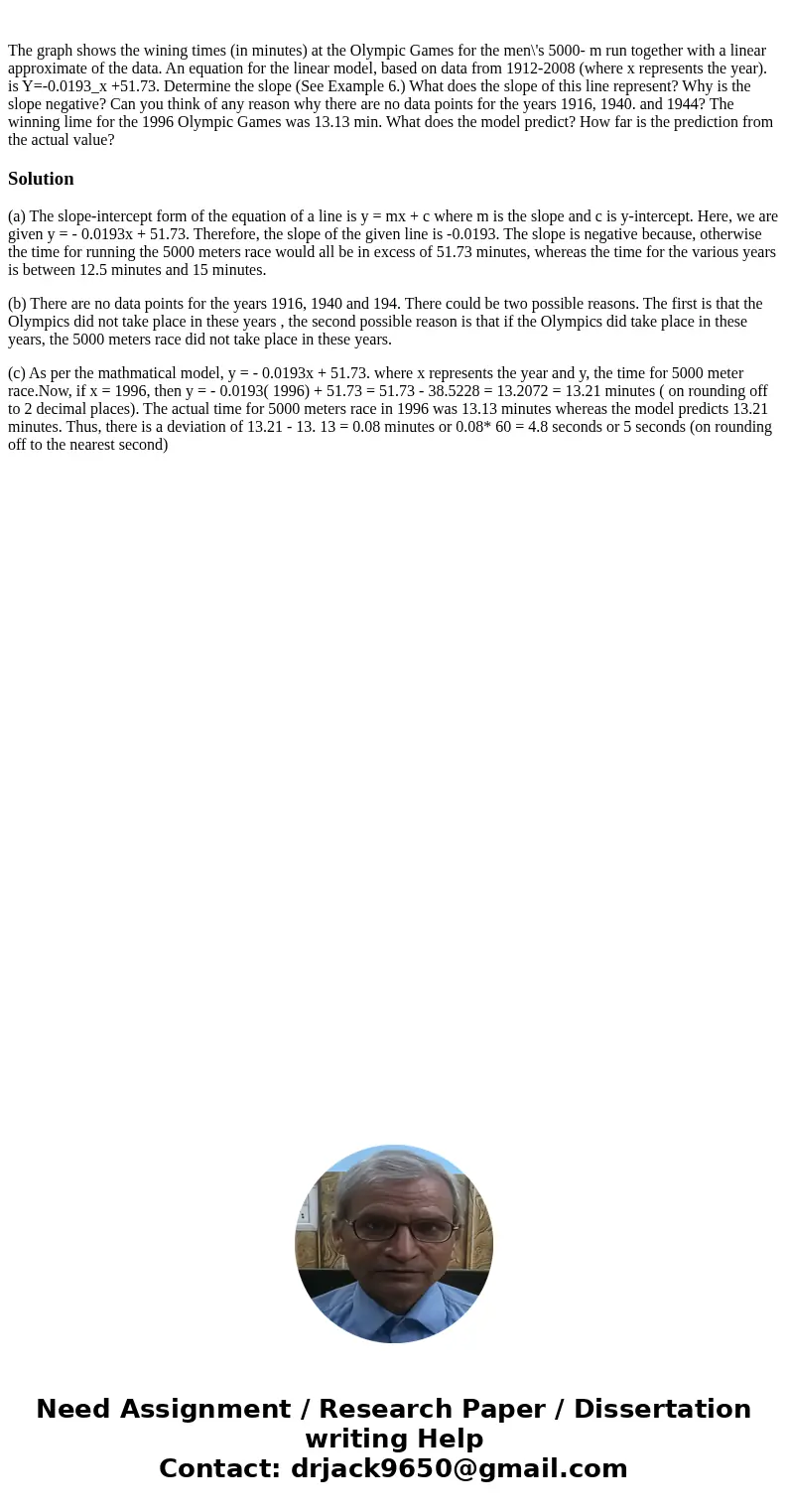The graph shows the wining times in minutes at the Olympic G
Solution
(a) The slope-intercept form of the equation of a line is y = mx + c where m is the slope and c is y-intercept. Here, we are given y = - 0.0193x + 51.73. Therefore, the slope of the given line is -0.0193. The slope is negative because, otherwise the time for running the 5000 meters race would all be in excess of 51.73 minutes, whereas the time for the various years is between 12.5 minutes and 15 minutes.
(b) There are no data points for the years 1916, 1940 and 194. There could be two possible reasons. The first is that the Olympics did not take place in these years , the second possible reason is that if the Olympics did take place in these years, the 5000 meters race did not take place in these years.
(c) As per the mathmatical model, y = - 0.0193x + 51.73. where x represents the year and y, the time for 5000 meter race.Now, if x = 1996, then y = - 0.0193( 1996) + 51.73 = 51.73 - 38.5228 = 13.2072 = 13.21 minutes ( on rounding off to 2 decimal places). The actual time for 5000 meters race in 1996 was 13.13 minutes whereas the model predicts 13.21 minutes. Thus, there is a deviation of 13.21 - 13. 13 = 0.08 minutes or 0.08* 60 = 4.8 seconds or 5 seconds (on rounding off to the nearest second)

 Homework Sourse
Homework Sourse